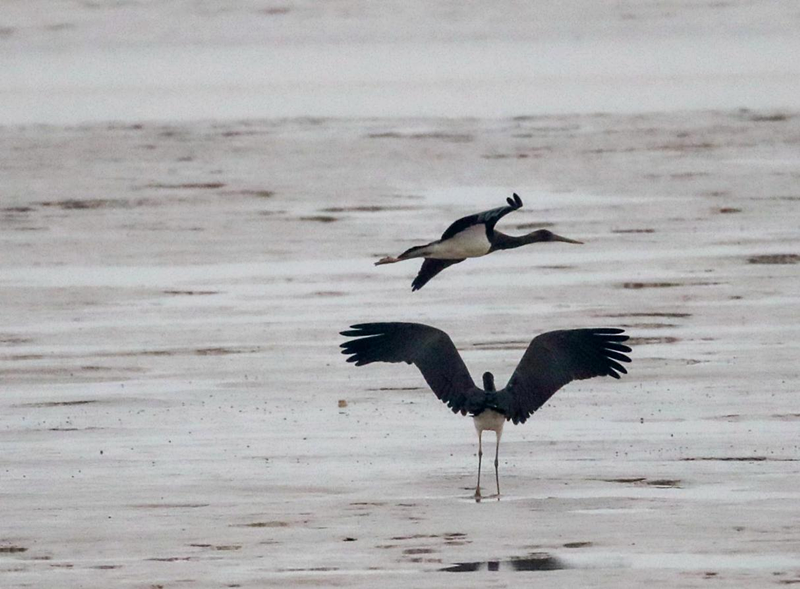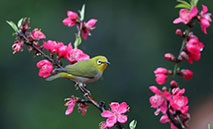China sees remarkable progress of wildlife observation (2)
This month, several wildlife photographers captured rare pictures of a great hornbill, a state-protected wild animal species, sealing up a nest cavity on a tree in Yingjiang County, southwest China's Yunnan Province.
These pictures are of extremely high value in China, compared with text descriptions on how this type of birds seal a tree hole to build a nest.
Yingjiang County is a major habitat of hornbills in China, a species with bright feathers and huge wingspan. When great hornbills fly, the powerful strokes produce a rhythmic thrumming.
The county is home to 710 bird species, where hornbill activities can be observed regularly. A well-organized team is now recording the activities, which consists of journalists, bird-watchers, ornithologists and staff members of local nature reserves. Local farmers have been helping them locate the birds, and offering assistance in logistics.
Yin Yihu is the photographer who recorded how the great hornbill sealed its nest. On March 4, the man, who works for a local media center in Yingjiang, also captured pictures of wreathed hornbill, another family of hornbills under the national second-class protection in China.
Later, together with local wildlife photographers, Yin captured images of three rufous-necked hornbills deep in a forest with an altitude of over 2,000 meters, including two males and one female.
On March 8, Yugong forest farm in Jiyuan, central China's Henan Province announced that since 2015, Taihang Mountain Macaque National Nature Reserve has captured over a hundred images and footages of leopards, a species under the national first-class protection in China, with infrared cameras. It suggested that the range of the big cats has been expanded. When the cameras were freshly set up in the mountain, only 10 of them captured images of the animal, while the number now is 30. A total of six leopards have been discovered, up from three at the beginning.
Nowadays, more and more observation results and cases of protection for wildlife species are being presented to the public. It is result of the joint efforts made by the general public and professionals. For instance, most of the villagers in Yingjiang County know the ABCs of bird protection, and are aware of its importance. It is because of the common efforts made by the society that China's ecology has embraced constant improvement with more diverse animal and plant population.
March 3 this year marked the 8th World Wildlife Day (WWD), and in China, the theme of the WWD was "facilitating green development and working for harmony between mankind and nature."
In recent years, China has continuously improved the legal system and management of wildlife protection, further enhanced international cooperation on wildlife protection, vigorously promoted the protection of wildlife habitats, and launched massive in-situ and ex-situ conservation activities for wild plants. As a result, the country has put under protection 90 percent of vegetation forms and terrestrial ecosystems, 65 percent of macrophyte communities, and 85 percent of major wildlife populations. The populations of rare and endangered wildlife species such as giant pandas, crested ibises, Tibetan antelopes, Cycas revoluta and Davidia involucrata have recovered.
 |  |
Photos
Related Stories
- China prepares special protection for key wildlife species
- China largely expands scope of wildlife under state priority conservation
- Thousands prosecuted in China for wildlife-related crimes
- China border police seize endangered wildlife products
- Senior legislator stresses implementing wildlife protection law
- Official in NW China engages in saving wildlife for almost 10 years
- New regulation on wildlife protection takes effect in Beijing
- There are no so-called "wildlife wet markets" in China: spokesperson
- SA Media: China to bring ‘sea change’ in global wildlife protection
- Beijing strengthens monitoring of wildlife
Copyright © 2021 People's Daily Online. All Rights Reserved.











